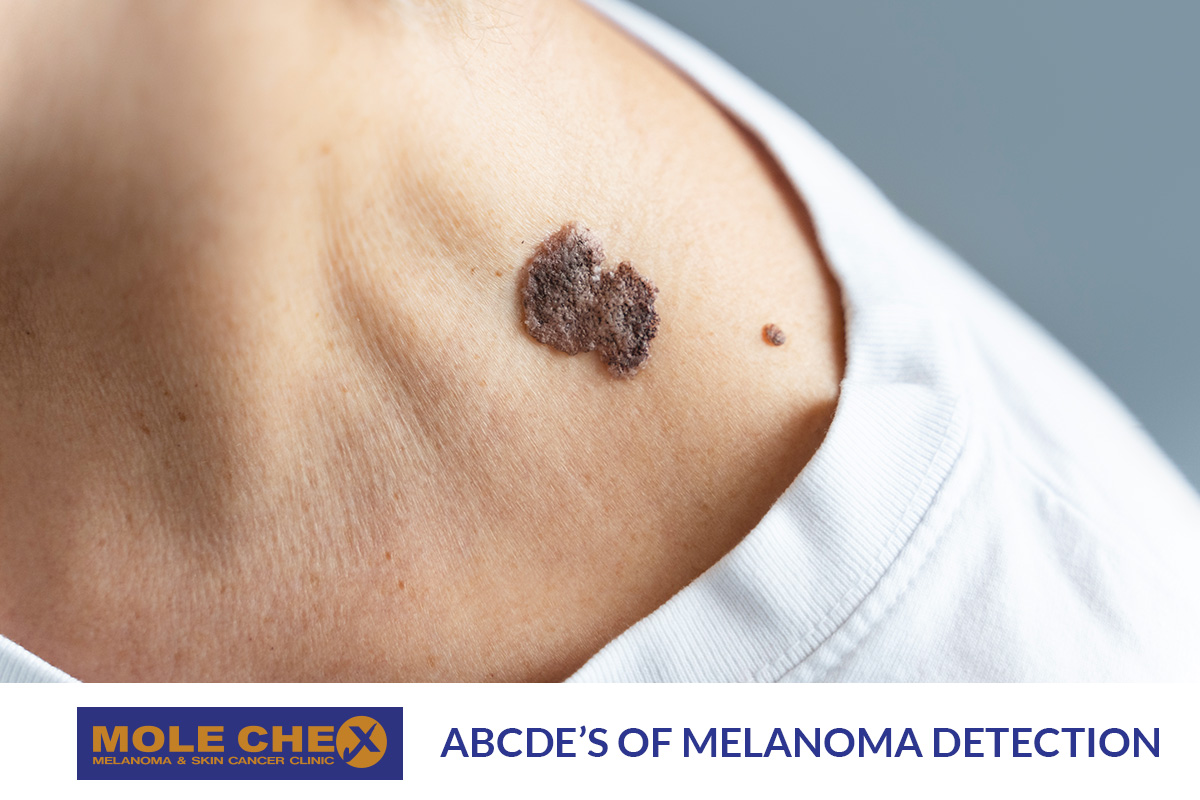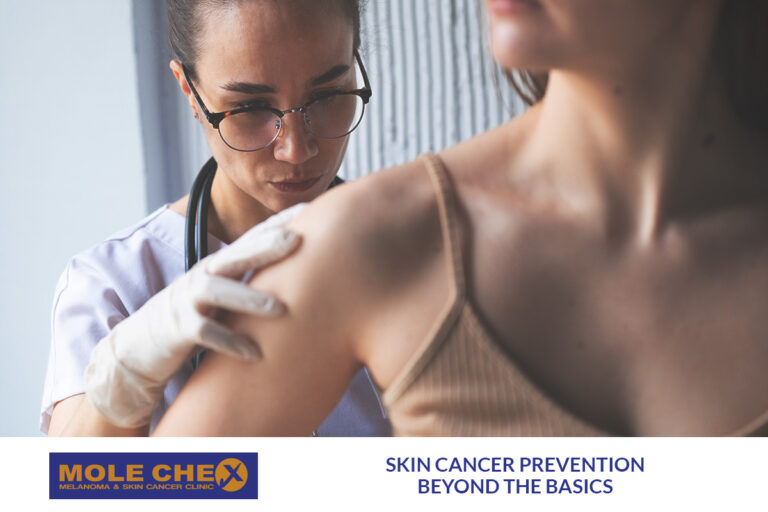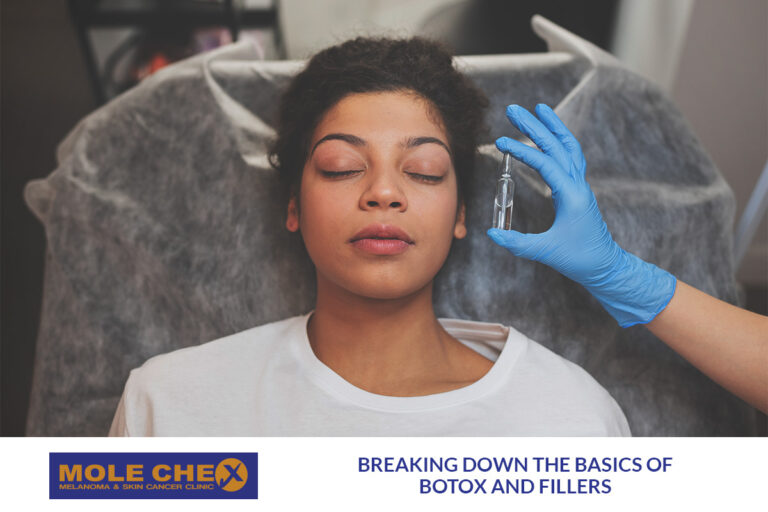ABCDEs of Melanoma Detection : All you need to know

Melanoma, often dubbed as the deadliest form of skin cancer, is a malignancy that arises in the skin’s pigment-producing cells called melanocytes. In Australia, where sun exposure is common and skin cancer rates are among the highest globally, understanding melanoma is essential. This article aims to shed light on what melanoma is, its prevalence across Australia, and crucially, how to detect it early using the ABCDEs. We’ll also discuss how melanoma spreads, distinguish it from a regular mole, and emphasize the role of skin doctors in safeguarding your skin health.
Melanoma in Australia
Australia’s sunny climate is a double-edged sword, as it contributes to one of the world’s highest rates of skin cancer, including melanoma. Statistics show that around 15,000 new cases of melanoma are diagnosed annually in the country. This translates to approximately 41 new cases every day, making it a significant public health concern. But here’s the silver lining: with early detection and appropriate management, melanoma is highly treatable. This underscores the importance of regular skin checks and understanding the ABCDEs of melanoma detection.
ABCDEs of Melanoma Detection:
- Asymmetry: Healthy moles are usually symmetrical, meaning if you were to divide them in half, both sides would mirror each other. Melanomas often display asymmetry, where one half looks different from the other.
- Border Irregularity: Benign moles typically have smooth, well-defined edges. Melanomas often exhibit irregular, notched, or blurred borders.
- Color Variation: Moles usually have a uniform color throughout. Melanomas often feature multiple colors or an uneven distribution of color, ranging from black and brown to red, white, or blue.
- Diameter: While melanomas can be small, they tend to be larger in diameter than benign moles. Keep an eye on moles that are greater than 6 millimeters in size (about the size of a pencil eraser).
- Evolving: Any change in size, shape, color, or elevation of a mole should be a cause for concern. Monitor your moles regularly and seek professional advice if you notice any changes.
How Melanoma Spreads
If left untreated, melanoma can spread to other parts of the body, making it more challenging to treat. It can metastasize to organs like the lungs, liver, brain, and bones. Early detection and prompt intervention are essential to prevent its spread.
Mole vs. Melanoma: How to Tell the Difference
Differentiating between a benign mole and melanoma can be tricky. A dermatologist or skin doctor is best equipped to make this assessment. However, the ABCDEs can serve as a useful guideline. If a mole displays any of the characteristics mentioned above, it’s advisable to have it examined by a professional.
Early Detection with ABCDEs of Melanoma: Your Best Defense Against Skin Cancer
When it comes to skin cancer, early detection can make all the difference in the world. Timely intervention often means simpler treatments and better outcomes. Here’s why early detection is so critical:
- Higher Cure Rates: Skin cancers, especially melanoma, can spread rapidly if left untreated. However, when detected in its early stages, the cure rates are remarkably high. The chance of a complete cure through surgical removal is excellent, and this minimizes the risk of further complications.
- Less Invasive Treatments: The size and depth of a skin cancer lesion can determine the extent of treatment required. Smaller, superficial lesions can often be removed with less invasive procedures like excision, cryotherapy, or topical medications. The larger the lesion or the more advanced the cancer, the more complex and invasive the treatment becomes.
- Preservation of Healthy Skin: Early detection helps in preserving more of your healthy skin. In cases where skin cancer is detected at an advanced stage, a more extensive excision may be necessary, which can result in larger scars and more significant cosmetic concerns.
- Lower Healthcare Costs: Treating skin cancer in its early stages typically requires fewer medical resources, resulting in lower healthcare costs. Regular skin checks can help you catch potential issues before they become serious, saving you money in the long run.
- Peace of Mind: Early detection not only improves physical outcomes but also provides peace of mind. Knowing that you’ve addressed a potential skin cancer concern promptly reduces stress and anxiety related to your health.
Generally, Regular skin checks with a dermatologist or skin doctor are essential for early detection. If you suspect a mole or skin lesion might be cancerous or if you notice any changes in your skin, don’t hesitate to seek medical advice. Your skin health is a priority, and early intervention can significantly improve your prognosis.
In conclusion, early detection of skin cancer is your best defense against this prevalent and potentially dangerous condition. By being vigilant, practicing sun safety, and seeking medical attention for any suspicious changes, you can protect yourself and reduce the risk of skin cancer-related complications. Remember, when in doubt, consult a skin doctor or dermatologist who can provide expert guidance and perform necessary tests to ensure your skin health.
The Role of Skin Doctors in Skin Cancer Prevention
Skin doctors, particularly dermatologists, play a pivotal role in skin cancer prevention, detection, and treatment. They are trained to identify suspicious moles, conduct skin checks, perform biopsies when necessary, and provide expert guidance on skin cancer management. Regular skin checks by a dermatologist are crucial for individuals at higher risk, such as those with fair skin or a family history of skin cancer.
Conclusion
So, Melanoma is a serious skin cancer, but with awareness and early detection, it can often be successfully treated. Familiarize yourself with the ABCDEs of melanoma detection, and don’t hesitate to consult a skin doctor if you have any concerns about your skin. Remember, regular skin checks are a proactive step toward protecting your skin health. Schedule a skin check today and ensure your skin’s well-being for the future.
Interested in learning more ? Visit skin cancer website : cancer.org.au
Read other article :



